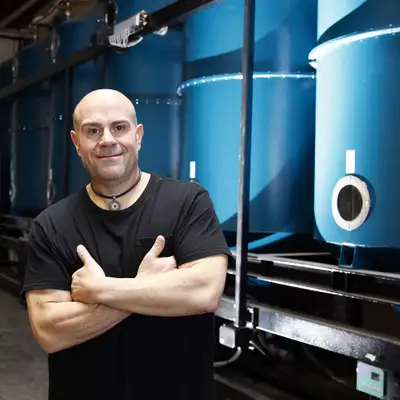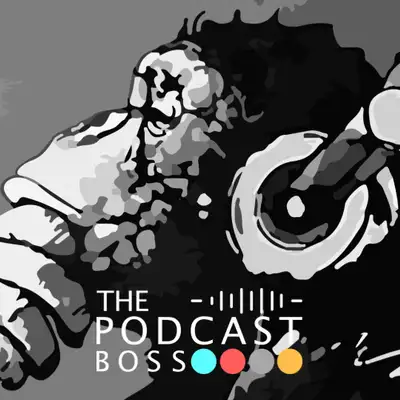Harnessing the Power of Social Media: A Comprehensive Guide to Emotional Engagement
Hi, listen to Phil Di Bella and this is Flash Cast by pdp. Today I wanna talk about social media, get asked a lot about social media, and I'm gonna split it into two, my personal social media which of course has had highs and had lows. Thankfully a lot more highs and a couple of lows, but I'll discuss that a little bit further after.
And then of course, business social media, which is all about helping you build your brand. So let's first start with what is social media? Well, the technical term is that social media refers to the means of interactions among people in which they create, share, and or exchange information and ideas in virtual communities and networks.
Well, what is it? To me, social media is a marketing tool. It's a channel. . So, you know, the, the the, the clinical term, if you look it up says that it's the means of interactions amongst people where they create, share, exchange information and ideas in a virtual community and networks. But again, it's very simply put in my words, it is a marketing communication channel.
And what is marketing? Marketing is the art of telling a story so compelling that people choose you. So, and in this case, social media. Personally, professionally and family, and in some cases can be used for all three. So on my, my personal social media, the Philip Di Bella account, I use social media to interact, to tell a story, to engage.
And I do it around personal. What am I doing personally, whether it's about my weight loss journey, whether it's about me playing golf or being grateful you know, sharing fun moments whether it's about family and capturing the moment of family. And sharing that with family, friends all over the world that we have that see, you know, me, my wife, my children have great moments and then business to share what we're doing in the business community as well.
Because all of the three areas make up who I am as a person. So personal, professional, family makes up who I am and take it that social media. Is a marketing channel, it is a channel to tell a story in all those three areas. That is, you know, one big tip when you take social media into the workplace.
Well, it's, again, it's a marketing tool and it's a channel. So it's, it's all about telling a story. So engaging that people want to choose you and your business and your personal choose you business, whether it's a product or a service. So, I'm gonna keep reiterating this. Social media is a channel, it's a marketing channel.
It's, it's a tool used to tell a story so that people choose you and you break it down. And I always say everyone should have a social media plan and it should make up the greater marketing plan because social media is a channel, one channel of marketing. It's not the only channel, of course, but it is one, and it is a, Major, major channel.
Why? Well, because what does it do? What does social media do? It allows you to have conversations. It allows you to share information. It allows you to share content, to create content out there. But again, what's goes in, this is everything that goes into the funnel. But what actually comes out the bottom of the funnel is emotional engagement.
And I think we really, really need to be aware of that, that social media, it allows you to have conversations. It allows you to tell people what you're doing in your personal, professional family life. And it allows you to share content that you've created or that you've read, or that you you, you've seen from other people.
It allows you, again, to put all of this stuff in the funnel, but what comes out the bottom, what is your purpose? What is the fundamental driver of social media? And everyone needs to be very, very vivid and aware of this, is that you want to create emotional. and I think a lot of people don't start from the outside in.
They start from the inside out. They just put all this stuff in a funnel with no idea of what's coming out the bottom. And then when they don't get the reaction they expect or the reaction they want, or, or, or you know, or feel like they should get, it's because they haven't been conscious, they haven't built that story or that that post around what the outside in is.
And the outside in is emotional engagement. , when I take my stuff personally on from a personal level, I'm very aware when I'm gonna get positive comments, when I'm gonna get negative comments, where I'm gonna get people agreeing and sometimes they don't agree, and that's okay. I'm very, very aware of that.
Because why, when I'm putting everything in a funnel, I know that it's gonna create emotional engagement. Now, emotional engagement doesn't mean it's always gonna be positive emotional engagement, and many times it's gonna be negative. But the key is to be conscious. And I'm gonna talk about the one time specifically that I stuffed up on my personal social media was that when I wasn't conscious and I was watching the football and I made stupid comments on.
Social media page about referees, and it was more or less commentating what was happening live on my social media, and it got broadcasted out and it got shared and I wasn't using appropriate language. And in some cases derogatory comments, which was not appropriate when you, when you obviously are being followed by many people and some people see you in that, in that positive light that you should be an example.
And of course I own. I made a mistake and I've learned from it. And it wasn't a highlight of my career whatsoever from a personal level. I was very disappointed in myself, but it was a great learning platform for me to really understand what social media was all about and that social media is all about, like I said, it's a tool, it's a channel of a, that you put all this stuff in a funnel and out the bottom spits emotional engagement.
And in this case where I stuffed up around the state of origin, Commentating was that the engagement was negative, that it, it stirred a lot of people up in the wrong way. And for that, obviously I apologized cuz that was not my intention and that was a classic example that I didn't build it from the outside in.
It was all about the inside out. And if there's one key takeaway, that's what I want you to take from this flash casts today, is that you should always be conscious of what is gonna come out of the funnel before you put the stuff in the. Be very conscious and anticipate what people are gonna be saying about you after they read or engage with the channel, you know, in what the content and what you're putting on the social media channel.
So here's a couple of tips that I now follow and again, from experience and I hope these help you, you know, it's my tips for social media posts. Well, one, pick and choose your social media. Platform there is an appropriate media platform for, for appropriate messaging that you wanna send personally, professionally, family.
There is that and whether you are building your personal brand or whether it's your business brand. So make sure that you choose the appropriate social media platform for you because they are not all the same and the audience is not all the same, and the purpose is not all the same. Twitter is completely different to Instagram, which is completely different to LinkedIn, which is completely different to obviously Facebook.
So choose the right. Social media platform classic fail. Here is you see a few people, not many. I don't see many, but I see a few people posting personal stuff or holiday picks on LinkedIn. LinkedIn is a business platform. Keep it business. Number two, write short simple content. Show your audience the value of their time.
Each post should have one idea and one goal. You start from the outside in, write short, simple content. Start from the outside in. Be conscious of that funnel and what's coming out. The bottom three, aim for a sixth grade or lower reading level. I always say keep it simple. Make sure that anyone can read it and understand it because otherwise you're opening up to their individual analysis and you don't want that because someone might think that you are saying oranges and somebody else thinks you're saying bananas when really you wanna talk about apples.
So keep it really, really simple for people to understand. You getting the message across for format your posts for skimming. Make sure that people can just skim read. I'm a skim reader at the best of times. I could never have made a great lawyer cuz I don't read every word. So make sure that you're looking at it because people are gonna skim read it.
They're gonna use the headlines, they're gonna look at bullet points use emojis, images, videos. These are all great ways. To allow people to just get the points straight away. If you start drawing, you know, big pack paragraphs and lots of words not gonna happen, people will skim read. So use headers, use bullet points, use emojis, images, images and videos are great.
People love to engage with that. Five, keep everything short and sweet. Even videos, one minute. You know, if you're gonna be longer than one or two minutes, go to a Facebook Live. If it's a Facebook, because people want to keep things short and sweet and respect people's time so that they engage.
Cause remember, this is the purpose. You want them to emotionally engage. I'll keep coming back to the purpose. The purpose, the purpose, emotionally engage. They won't emotionally engage if you don't follow these six tips. And finally, a big one. Number six, always have a call to action. I read these amazing posts or this amazing content and then I'm left.
Do you want me to go to your website? Do you want me to buy your product? Do you want me to engage? But again, if you start from the outside in, you'll have a call to action. Naturally. What is the call to action? What do you want people to do after they've engaged with your social media posts? Do you want them to know more about you personally, more professionally or family?
do you simply just want to share videos and photos and use, you know, the social media's library cloud to store it, which I do a lot of when I'm posting stuff about, you know, photos of my car or photos of, of, of certain moments. I don't keep it on my phone. I use Facebook for that, but very, very clearly.
What is the call to action? Again, this sums up starting from the outside in. Remember, social media is a tool, it's a. To emotionally engage. And if you keep coming back to that, then you will be one step better tomorrow than you are today in the social media realm. And trust me, as I've shared with you, I've learned from experience Till next time, you've been listening to Phil Di Bella, and this is Flash Cast by P D B.
Creators and Guests



